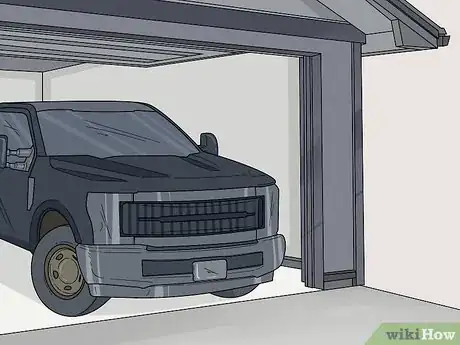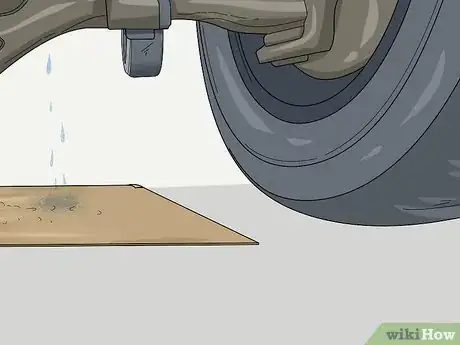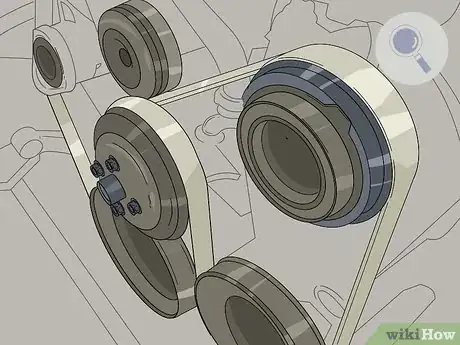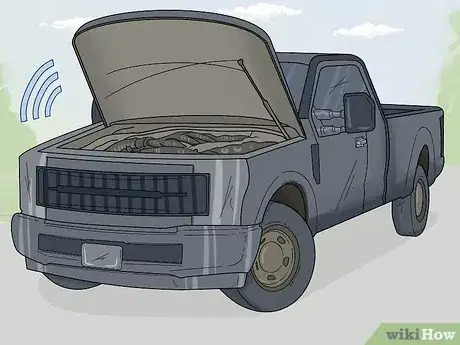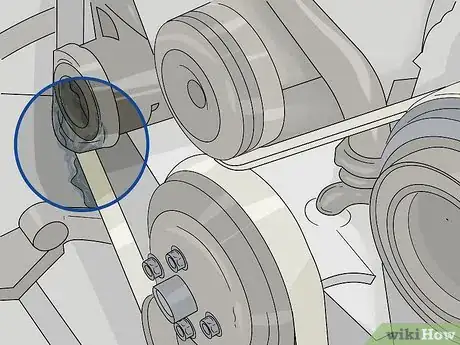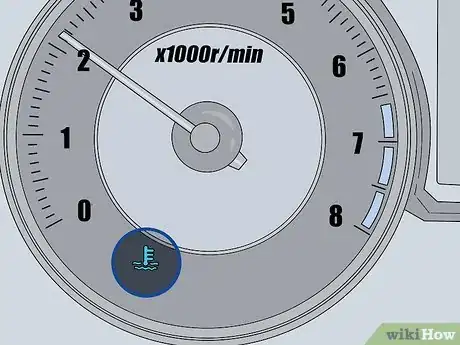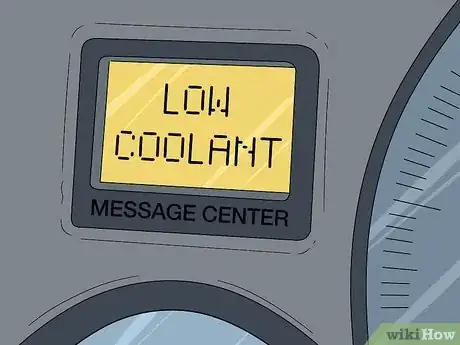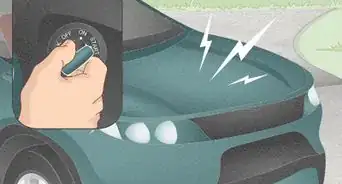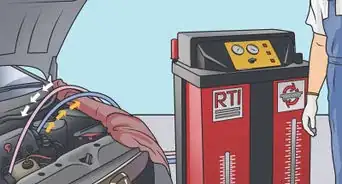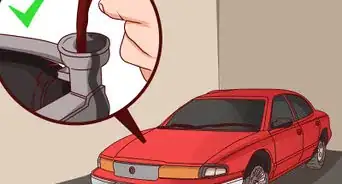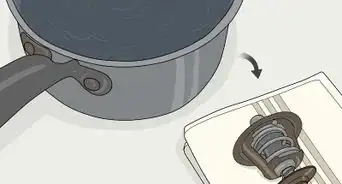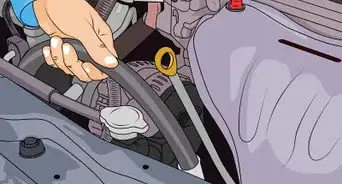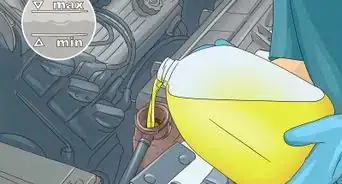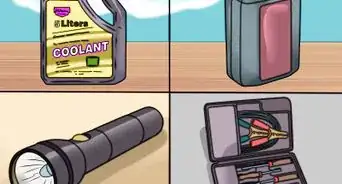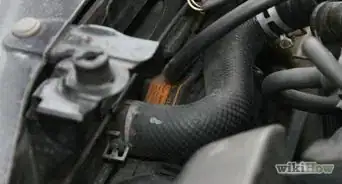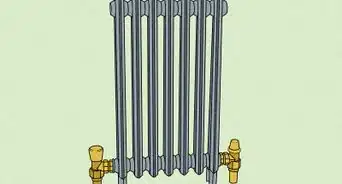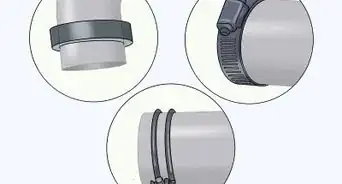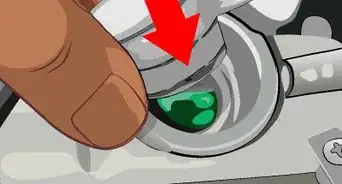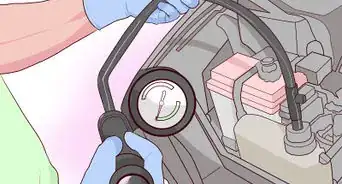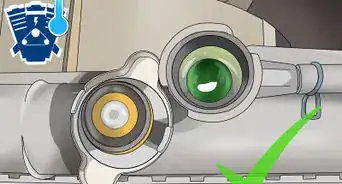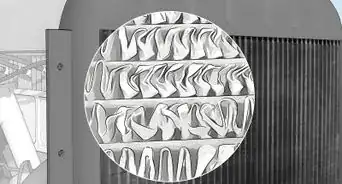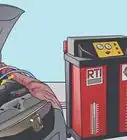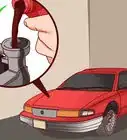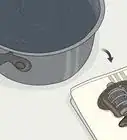This article was co-authored by Rocco Lovetere. Rocco Lovetere is the Owner and a Master Mechanic at Rocco's Mobile Auto Repair in California. With over 20 years of experience, he specializes in Honda, Acura, Toyota, Nissan, Infiniti, and Volvo cars. He is an ASE Certified Automotive technician and has worked in automotive repair since 1999.
wikiHow marks an article as reader-approved once it receives enough positive feedback. This article received 16 testimonials and 92% of readers who voted found it helpful, earning it our reader-approved status.
This article has been viewed 1,409,504 times.
Your car's water pump is an important part of your vehicle. It is the part that continually pumps coolant to your vehicle's engine so that it doesn't overheat. A leak or a faulty bearing can cause serious damage to your car's engine. Puddles of coolant underneath your vehicle or high temperature readings may be signs that your water pump needs replacing.
Steps
-
1Let your car sit overnight, parked in a garage with a clean concrete floor. If it's not possible to park it inside on a clean concrete surface, place a piece of light-colored cardboard underneath your car directly under the motor. Be mindful that water pumps are more likely to leak while the vehicle engine is running, so this is a poor reference for finding a leak.
-
2Examine the cardboard the next morning. If it appears to be wet from coolant, you have a leak somewhere, possibly in your water pump, but other sources of leaking coolant could be radiator hoses, heater hoses, freeze plugs, gaskets, or the radiator itself. To narrow the search down, try to place the cardboard directly underneath the water pump itself. If you notice green liquid on the cardboard, it's antifreeze. This means you have a coolant leak somewhere.[1]Advertisement
-
3Check the water pump pulley. Find the round part at the front of your water pump that the belt is around. Attempt to rock the pulley back and forth. If it seems to be loose, it may be time to replace it, because the bearing is going bad.[2]
-
4Listen to your car. Start your car's engine with the hood up. If you hear a low-pitched grinding noise, it may indicate that your water pump bearing is going bad. You can often hear it plainly if it's gone bad.[3] You also have similar bearings in your AC compressor, power steering pump, and alternator, so you need to be able to focus on the exact source of the sound, often difficult on a running engine.
-
5Look for leaks around the water pump. If you see drops of water or a small stream, you have a leak. Many water pumps have a weep hole in front of the seal that will allow water to leak out if the seal is bad.
-
6Notice if your temperature warning light comes on. If your car is not circulating enough coolant due to a leaky or malfunctioning water pump, your engine temperature is going to increase, triggering the warning light.[4]
-
7Observe if your low coolant light is glowing. This can be an indicator that your coolant reservoir is leaking or that you have a bad water pump. One other alternative is that there is a leak in the cooling system.
Warnings
- If your coolant is low and car is or has just been running, let it cool down before adding water or coolant. If the engine is hot, adding cool water can crack the engine block because of the drastic difference in temperature, turning your minor expense into a huge expense.⧼thumbs_response⧽
- Do not add 100% coolant to your vehicle, it will make it run warm and or overheat. Follow vehicle recommendation, generally 50/50 mix, some take up to 70/30. Never use pure water, as the boiling point of water is too low for modern engines.⧼thumbs_response⧽
References
About This Article
The easiest way to tell if a car’s water pump needs replaced is to check for leaks. Park your car on a flat surface and place a piece of clean cardboard directly underneath the motor. Let the car sit overnight and then examine the cardboard. If the cardboard is wet, you likely have a leak somewhere in the motor. Try to position the cardboard directly under the water pump, and look for traces of green liquid on the cardboard, which is usually a sign that antifreeze is leaking from the pump. For more tips, including how to examine the water pump for leaks, scroll down!
